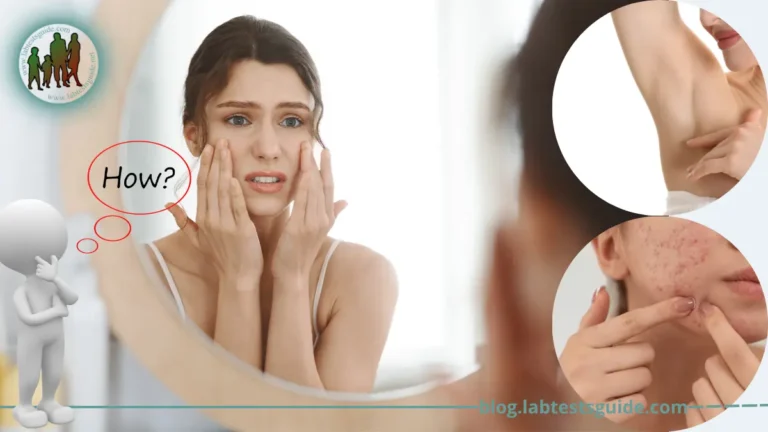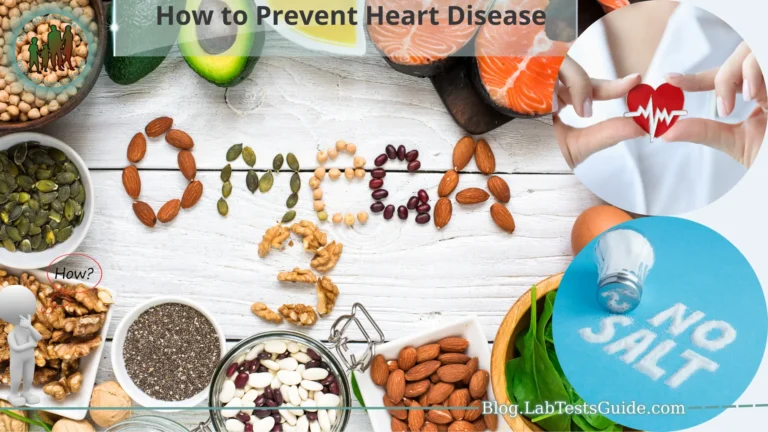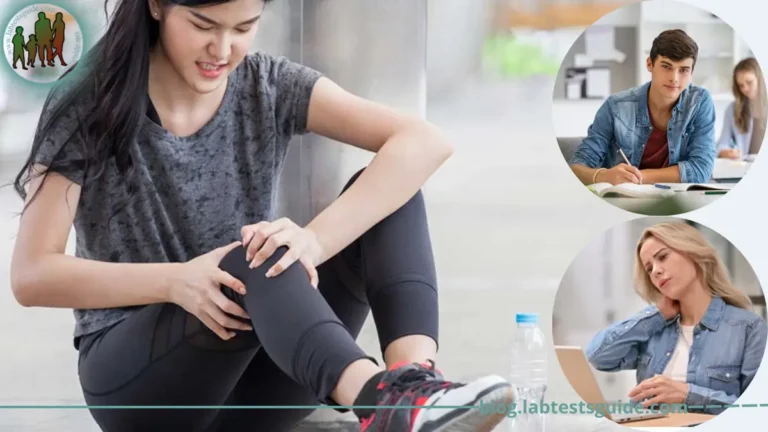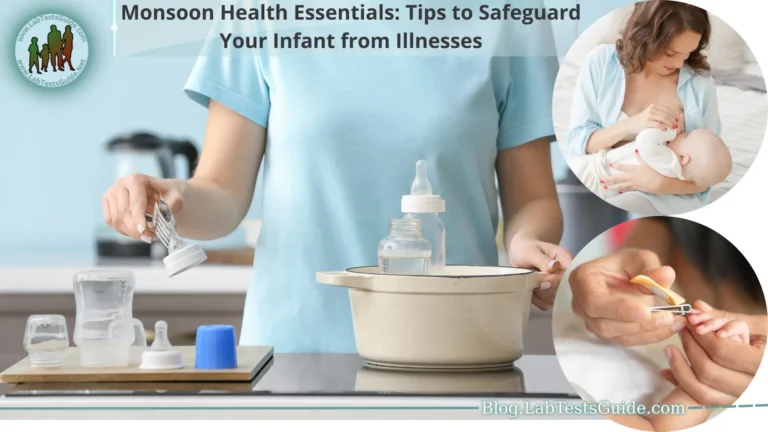In everyday life, accidents and emergencies can occur unexpectedly, be it at home, work, or in public spaces. Whether it’s a minor injury or a life-threatening situation, knowing how to perform basic first aid procedures can make a crucial difference in providing immediate help and potentially saving lives. First aid is the initial care given to an injured or ill person before professional medical assistance arrives. It is not meant to replace proper medical treatment but serves as a critical bridge during the crucial moments after an incident.
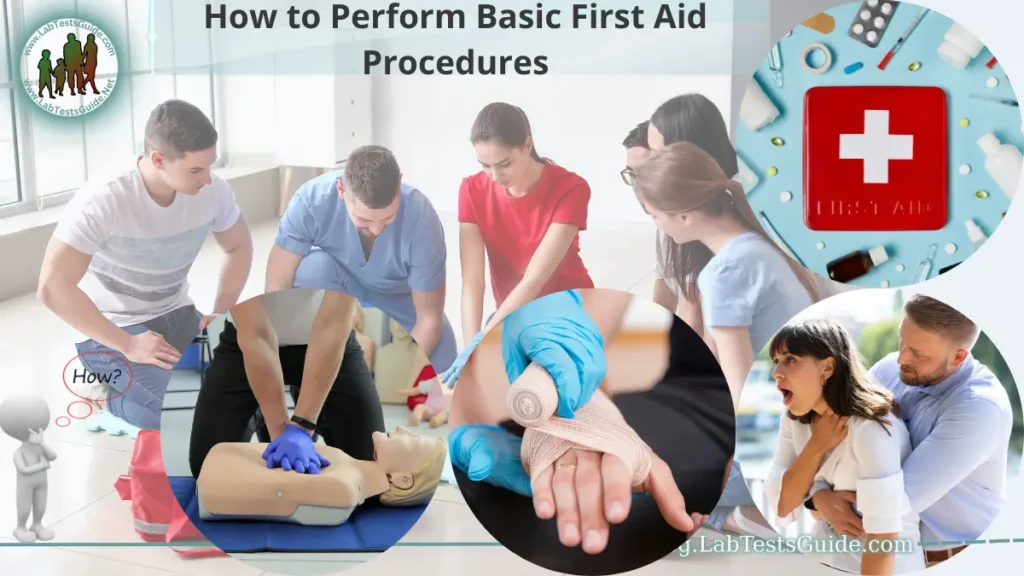
The importance of first aid knowledge cannot be overstated. In many emergency situations, every second counts, and having the ability to take swift and appropriate action can significantly impact the outcome. Moreover, first aid knowledge empowers individuals to remain calm and composed in high-stress situations, ensuring a safe environment for both the victim and those providing assistance.
What Is First Aid?
- First aid is the immediate and initial assistance given to an injured or ill person before professional medical help arrives.
- It is a set of simple, life-saving techniques that can be applied by anyone, regardless of medical training.
- The primary goal of first aid is to preserve life, prevent further harm, and promote recovery.
- First aid can be provided in various settings, including homes, workplaces, schools, and public areas.
- It includes a wide range of techniques, from basic wound care and bandaging to more complex procedures like CPR (Cardiopulmonary Resuscitation).
- First aid skills can be applied to treat various injuries, such as cuts, burns, fractures, and sprains, as well as to manage medical emergencies like seizures or heart attacks.
- It is essential to stay calm and assess the situation carefully before administering first aid to ensure the safety of both the victim and the rescuer.
- Properly applied first aid can significantly improve the chances of survival and recovery for the injured person.
- While first aid is crucial, it is not a substitute for professional medical care, and victims should be taken to a healthcare facility for further evaluation and treatment after receiving initial assistance.
- Formal first aid training and certification are recommended to enhance skills, boost confidence, and provide a more comprehensive understanding of emergency response.
How to Perform Basic First Aid Procedures:
Assess the Situation:
- Ensure the area is safe for both the victim and yourself.
- Look for potential hazards or dangers before approaching the injured person.
Check for Responsiveness:
- Gently tap the person and ask loudly if they are okay.
- Check if the person responds to your voice or touch.
Call for Help:
- Dial emergency services or ask someone nearby to call for professional medical assistance.
- Provide essential information about the situation and the victim’s condition to the dispatcher.
Assess Breathing:
- Look, listen, and feel for breathing to determine if the person is breathing normally.
- If the person is not breathing or only gasping, start CPR immediately.
Perform CPR (Cardiopulmonary Resuscitation):
- Position the person on their back on a firm, flat surface.
- Perform chest compressions and rescue breaths in the appropriate ratio.
Control Bleeding:
- Apply direct pressure on the wound with a clean cloth or dressing.
- Elevate the injured limb if possible to reduce blood flow.
Treat Burns:
- Cool minor burns with cool (not cold) water for at least 10 minutes.
- Cover the burn with a sterile non-stick dressing.
Immobilize Fractures, Sprains, and Strains:
- Stabilize the injured area using splints or materials like cardboard or rolled-up magazines.
- Elevate the injured limb to reduce swelling for sprains and strains.
Choking:
- Determine if the person is choking and unable to breathe or speak.
- Perform the Heimlich maneuver (abdominal thrusts) to dislodge the object blocking the airway.
Manage Shock:
- Lay the person down with their legs elevated (unless there is a suspected head, neck, back, or leg injury).
- Cover the person with a blanket to keep them warm.
Safety Precautions:
Personal Safety First:
- Before providing first aid, ensure your safety and the safety of others at the scene.
- Assess for potential hazards, such as traffic, fire, or hazardous materials.
- Protective Gear: Use personal protective equipment (PPE) like disposable gloves to prevent contact with bodily fluids or potential contaminants.
Consent and Communication:
- Obtain consent from the injured person before providing first aid, if they are conscious and able to respond.
- Communicate clearly and calmly with the person during the process to keep them informed and reassured.
Approaching the Victim:
- If you are unsure about the situation or the injured person’s condition, wait for professional medical help to arrive.
- Approach the person gently and avoid sudden movements, especially if they appear frightened or in pain.
Avoiding Unnecessary Movement:
- Minimize unnecessary movement of the injured person, especially if there is a suspected head, neck, or back injury.
- Keep the person still and stabilized until professional help arrives.
- Assessing and Reporting: Observe and assess the victim’s condition carefully, and report any important information to emergency services when you call for help.
Infection Control:
- Practice good hygiene by washing your hands thoroughly with soap and water before and after administering first aid.
- Use alcohol-based hand sanitizers if soap and water are not available.
- Safe Use of First Aid Equipment: If using first aid equipment like scissors or bandage scissors, do so with caution to prevent accidental injuries.
- Proper Lifting Techniques: When assisting an injured person to stand or move, use proper lifting techniques to avoid straining your back or causing harm to the person.
- Emotional Support: Offer emotional support and reassurance to the injured person during the process, as fear and anxiety can escalate in emergency situations.
Assessing the Victim:
Check for Responsiveness:
- Gently tap the person and shout loudly to check if they are conscious and responsive.
- If there is no response, call for help immediately.
Assess Breathing:
- Look, listen, and feel for breathing to determine if the person is breathing normally.
- If the person is not breathing or only gasping, start CPR immediately.
Check for Signs of Circulation:
- Assess for signs of circulation, such as a pulse or movement, to determine if the heart is beating and blood is circulating.
- If there is no pulse or sign of circulation, begin CPR along with rescue breaths.
Look for Injuries:
- Observe the person for any visible injuries, such as bleeding, fractures, burns, or wounds.
- Take note of any medical devices they may be wearing, like medical alert bracelets.
Determine the Person’s Level of Consciousness:
- Evaluate the person’s level of consciousness by asking simple questions or instructing them to follow commands.
- Assess if they are fully alert, confused, or unresponsive.
Assess for Allergies or Medical Conditions:
- If the person is conscious and able to communicate, inquire about any known allergies or medical conditions they may have.
- Look for medical alert bracelets or necklaces for vital information.
Check for Medications:
- If possible, find out if the person is taking any medications and if they have them with them.
- Take note of the medication names and dosages to inform medical responders.
- Determine the Mechanism of Injury: If the injury is due to an accident or trauma, try to determine the mechanism of injury to provide essential information to medical responders.
- Assess for Signs of Shock: Observe for signs of shock, such as pale skin, rapid breathing, or weak pulse, which may indicate a serious medical condition.
Keep the Person Calm and Reassured:
- Provide emotional support and reassurance to the victim during the assessment process.
- Explain what you are doing to help them feel at ease.
Activating Emergency Services:
Assess the Situation:
- Before anything else, ensure your safety and the safety of others at the scene.
- Look for potential hazards or dangers that might hinder emergency response.
Check the Victim’s Condition:
- Assess the injured person’s condition carefully to determine the severity of the situation.
- Determine if they need immediate medical attention.
Call for Help:
- Dial the emergency services number of your country (e.g., 911 in the United States) or the local emergency number applicable to your area.
- If you are unable to make the call, ask someone nearby to do it for you.
Provide Essential Information:
- Clearly communicate the details of the emergency to the dispatcher.
- Include the location of the incident, the number of injured persons, and any relevant information about their condition (e.g., unconscious, breathing difficulties, severe bleeding).
Stay on the Line:
- Stay on the phone with the dispatcher until they have gathered all necessary information.
- Follow any instructions provided by the dispatcher.
Don’t Hang Up Too Soon:
- Even if you have provided all the information, wait for the dispatcher to end the call.
- They may have additional questions or instructions for you.
Be Calm and Clear:
- Speak calmly and clearly when providing information to the dispatcher.
- This helps ensure that accurate details are relayed to the emergency responders.
Follow Their Guidance:
- If the dispatcher provides specific instructions or advice, follow them to the best of your ability.
- They may guide you through life-saving measures like CPR or first aid.
- Update If Necessary: If the situation changes or worsens while waiting for help, call emergency services again and provide updated information.
Stay with the Injured Person:
- Remain with the injured person until emergency responders arrive.
- Continue to provide any necessary first aid or comfort.
Basic Life Support (BLS):
Basic Life Support (BLS):
- BLS is a set of life-saving techniques for cardiac arrest or respiratory failure.
- It is performed before professional medical help arrives.
Components of BLS:
- BLS includes CPR (Cardiopulmonary Resuscitation) and the use of an AED (Automated External Defibrillator).
- CPR involves chest compressions and rescue breaths to maintain blood circulation and oxygenation.
- AED is a device that delivers an electric shock to restore a normal heartbeat during cardiac arrest.
- BLS also includes clearing and opening the airway for effective breathing.
Importance of Quick Response:
- Quick recognition and response to cardiac arrest are essential for successful BLS.
- Acting promptly can improve the chances of saving lives during critical situations.
- Who Can Learn BLS: BLS training is valuable for healthcare professionals and individuals who want to be prepared to respond in emergencies.
Hands-on Practice:
- Hands-on practice with manikins is often part of BLS training.
- Practice helps build confidence and competence in performing life-saving techniques.
Significance of Learning BLS:
- Learning BLS can significantly improve the chances of saving lives during critical situations.
- BLS empowers individuals to take immediate action and provide effective assistance until advanced medical help arrives.
Choking:
- Choking is a life-threatening emergency that occurs when an object obstructs the airway, making it difficult or impossible to breathe.
- It can happen to both adults and children and is commonly caused by swallowing food or objects that are too large or difficult to chew.
- Signs of choking include difficulty breathing or speaking, clutching the throat, and turning blue or red in the face.
- Immediate action is crucial when someone is choking to prevent loss of consciousness or permanent injury.
- The Heimlich maneuver is a first aid technique used to clear the airway and dislodge the obstructing object.
- Stand behind the choking person, wrap your arms around their waist, and deliver upward thrusts just below the ribcage until the object is expelled.
- If the choking person becomes unconscious, lower them to the ground gently and begin CPR immediately.
- Choking incidents can often be prevented by cutting food into small pieces for young children and avoiding eating too quickly or while lying down.
- It is essential to keep small objects and toys that pose choking hazards out of reach of young children to prevent accidents.
Bleeding and Wound Care:
- Bleeding is the escape of blood from blood vessels due to injury or damage to the skin or internal organs.
- There are two types of bleeding: external (visible) and internal (hidden).
- External bleeding can be further classified as arterial (bright red and spurting), venous (dark red and flowing), or capillary (slow and oozing).
- Immediate action is necessary to control bleeding and prevent excessive blood loss.
- For external bleeding, apply direct pressure on the wound with a clean cloth or sterile dressing.
- Elevate the injured limb above the heart level, if possible, to help reduce blood flow to the area.
- If the bleeding persists, continue applying pressure and seek medical help.
- Do not remove any object that is stuck in the wound as it may be helping to control bleeding. Instead, stabilize the object and seek medical assistance.
- For severe bleeding, such as arterial bleeding, apply additional pressure with both hands or use a tourniquet as a last resort if medical help is not immediately available.
- Internal bleeding may not be visible, but signs can include pain, tenderness, swelling, or bruising. Seek medical help immediately if internal bleeding is suspected.
- After bleeding is controlled, clean the wound with mild soap and water to reduce the risk of infection.
- Apply an antibiotic ointment and cover the wound with a sterile bandage or dressing.
- Change the dressing regularly, keep the wound dry, and watch for any signs of infection, such as increased redness, swelling, or pus.
- Tetanus vaccinations should be up to date, especially for deep or dirty wounds.
- Seek professional medical attention for wounds that are deep, jagged, or caused by animal bites, or if there are concerns about infection or foreign objects in the wound.
- Avoid putting adhesive bandages directly on wounds that require medical attention to avoid sealing in infection.
Burns:
Burns:
- Burns are injuries to the skin and underlying tissues caused by heat, chemicals, electricity, or radiation.
Types of Burns.
- The severity of burns is classified into first-degree, second-degree, third-degree, and fourth-degree burns, based on the depth and extent of tissue damage.
- First-degree burns affect the outer layer of the skin, causing redness, pain, and minor swelling.
- Second-degree burns extend into the second layer of the skin, causing blistering, intense pain, and possible swelling.
- Third-degree burns affect all layers of the skin and can extend into the underlying tissues, appearing charred or white. These burns may cause numbness due to nerve damage.
- Fourth-degree burns are the most severe, extending through the skin and underlying tissues to damage muscles, tendons, and bones.
First Aid for Burns:
- For minor first-degree burns, run cool water over the affected area or apply a cold compress to alleviate pain and reduce swelling.
- Do not use ice directly on the burn, as it can further damage the skin.
- Avoid breaking blisters that form from second-degree burns, as they act as a protective barrier against infection.
- For more severe burns, especially third-degree burns, seek immediate medical attention.
- If clothing is stuck to a burn, do not attempt to remove it; seek professional medical help.
- Protect the burn from further injury or contamination by covering it with a sterile, non-stick dressing.
- Over-the-counter pain relievers can help manage pain from minor burns, but avoid applying creams or ointments without medical advice.
- Prevent infection by keeping the burn clean and dry, changing dressings regularly, and avoiding scratching or popping blisters.
Seeking Medical Attention:
- Seek medical attention if the burn is large, covers a sensitive area, or shows signs of infection such as increased redness, swelling, or pus.
- In case of chemical burns, flush the affected area with copious amounts of water for at least 20 minutes.
- Seek immediate medical attention for electrical burns, as there may be internal injuries not immediately visible.
Prevention:
- Always take appropriate precautions to prevent burns, such as using protective equipment when handling hot objects, cooking safely, and keeping chemicals out of reach.
Fractures, Sprains, and Strains:
Fractures, Sprains, and Strains:
- Fractures, sprains, and strains are common musculoskeletal injuries, but they have different causes and affect different structures in the body.
Fractures:
- Fractures are breaks or cracks in the bone caused by trauma, falls, or excessive force.
- Symptoms of fractures include severe pain, swelling, bruising, deformity, and limited mobility.
- For suspected fractures, immobilize the injured area with a splint or sling, and seek immediate medical attention.
Sprains:
- Sprains occur when ligaments (tissues connecting bones) are stretched or torn due to sudden movements or trauma.
- Symptoms of sprains include pain, swelling, bruising, and limited joint movement.
- Treatment involves the RICE method: Rest, Ice, Compression, and Elevation.
- Avoid putting weight on the affected area, apply ice packs, use a compression bandage, and elevate the injured limb.
- If the pain is severe or there is a loss of function, seek medical evaluation to rule out a fracture.
Strains:
- Strains happen when muscles or tendons are overstretched or torn, typically due to overuse or sudden movements.
- Symptoms of strains include pain, muscle spasms, swelling, and limited range of motion.
- Initial treatment for strains is similar to sprains: Rest, Ice, Compression, and Elevation.
- Over-the-counter pain relievers and gentle stretching exercises may help with recovery.
- If the strain is severe or does not improve, consult a healthcare professional.
Seeking Medical Attention:
- Seek immediate medical attention for suspected fractures, open fractures (bone piercing through the skin), or if the injury involves the neck, back, or head.
- Also, seek medical evaluation if there is severe pain, loss of function, or persistent symptoms for sprains and strains.
Prevention:
- To prevent fractures, use proper safety gear during physical activities and avoid risky behaviors.
- Stretching before exercise and using correct techniques can help prevent sprains and strains.
- Gradually increase the intensity of physical activities to avoid overuse injuries.
Psychological First Aid:
Psychological First Aid:
- Psychological First Aid (PFA) is a supportive and compassionate approach to help individuals cope with emotional distress and traumatic events.
- It is used to provide immediate psychological support to people affected by crisis situations, such as natural disasters, accidents, violence, or other traumatic incidents.
- PFA aims to promote resilience, reduce distress, and facilitate coping during and after a crisis.
- It is not a form of therapy but rather a way to offer emotional support and comfort in times of crisis.
Principles of Psychological First Aid:
- Safety and Security: Ensure the safety and physical well-being of the affected individuals and those providing aid.
- Calm and Comfort: Create a calm and supportive environment to help people feel safe and secure.
- Connect and Engage: Establish a compassionate and empathetic connection with individuals to encourage them to share their feelings and experiences.
- Active Listening: Practice active listening to understand their emotional needs and concerns without judgment.
- Practical Assistance: Offer practical support and resources to meet basic needs, such as food, shelter, and medical care.
- Information: Provide accurate and relevant information about the crisis, available resources, and support services.
- Coping Support: Help individuals identify their coping mechanisms and strengths to manage their emotions and reactions.
- Cultural Sensitivity: Be respectful of cultural differences and individual preferences in providing support.
When to Use Psychological First Aid:
- PFA can be applied during or shortly after a crisis event, as well as in the aftermath.
- It is suitable for individuals of all ages, including children, adolescents, adults, and older adults.
- PFA is beneficial for responders, healthcare workers, and volunteers who may experience stress and emotional challenges during crisis situations.
Psychological First Aid Techniques:
- Encourage individuals to talk about their feelings and experiences.
- Validate their emotions and reactions, letting them know that it is normal to feel distressed after a traumatic event.
- Provide reassurance and support without downplaying or minimizing their feelings.
- Help them identify their immediate needs and assist in finding resources to meet those needs.
- Encourage self-care activities, such as rest, relaxation, and connecting with loved ones.
- Promote social support by encouraging individuals to reach out to friends, family, or support groups.
Limitations of Psychological First Aid:
- PFA is not a substitute for professional mental health treatment or therapy.
- It may not be suitable for individuals experiencing severe mental health issues or prolonged distress.
- In such cases, referral to mental health professionals is necessary for more specialized support.
FAQs:
What is Psychological First Aid (PFA)?
PFA is a supportive and compassionate approach to help individuals cope with emotional distress and traumatic events. It provides immediate psychological support during and after crisis situations.
Who can provide Psychological First Aid?
PFA can be provided by trained professionals, such as mental health workers, counselors, and crisis responders. However, anyone can learn and apply basic PFA techniques to provide emotional support to those in need.
When is PFA used?
PFA is used during or shortly after a crisis event, as well as in the aftermath. It is beneficial in situations like natural disasters, accidents, violence, or any traumatic incident.
Is PFA a form of therapy?
No, PFA is not a form of therapy. It is a supportive intervention aimed at providing immediate emotional comfort and support. It does not involve in-depth counseling or treatment.
What are the principles of PFA?
The principles of PFA include safety and security, calm and comfort, connecting and engaging, active listening, practical assistance, providing information, coping support, and cultural sensitivity.
Can PFA be used for children and adolescents?
Yes, PFA is suitable for individuals of all ages, including children, adolescents, adults, and older adults. Techniques can be adapted to address the specific needs of different age groups.
Is PFA only for those directly affected by a crisis?
No, PFA can also benefit responders, healthcare workers, and volunteers who may experience stress and emotional challenges during crisis situations.
What are some PFA techniques?
PFA techniques include encouraging individuals to talk about their feelings, providing reassurance and support, helping them identify their immediate needs, promoting self-care activities, and encouraging social support.
What are the limitations of PFA?
PFA is not a substitute for professional mental health treatment or therapy. It may not be suitable for individuals experiencing severe mental health issues or prolonged distress. In such cases, referral to mental health professionals is necessary for more specialized support.
Conclusion:
In conclusion, Psychological First Aid (PFA) is a crucial and compassionate approach to providing immediate emotional support and comfort to individuals affected by crisis situations. It offers a set of principles and techniques that aim to promote resilience, reduce distress, and facilitate coping during and after traumatic events. PFA can be provided by trained professionals as well as individuals who have learned basic techniques, making it accessible and beneficial for people of all ages. While PFA is not a substitute for professional mental health treatment, it serves as a valuable tool to create a supportive environment, encourage open communication, and help individuals navigate the emotional challenges that arise during times of crisis. Recognizing the limitations of PFA and knowing when to seek specialized mental health support are essential for ensuring the well-being and recovery of those in distress.

